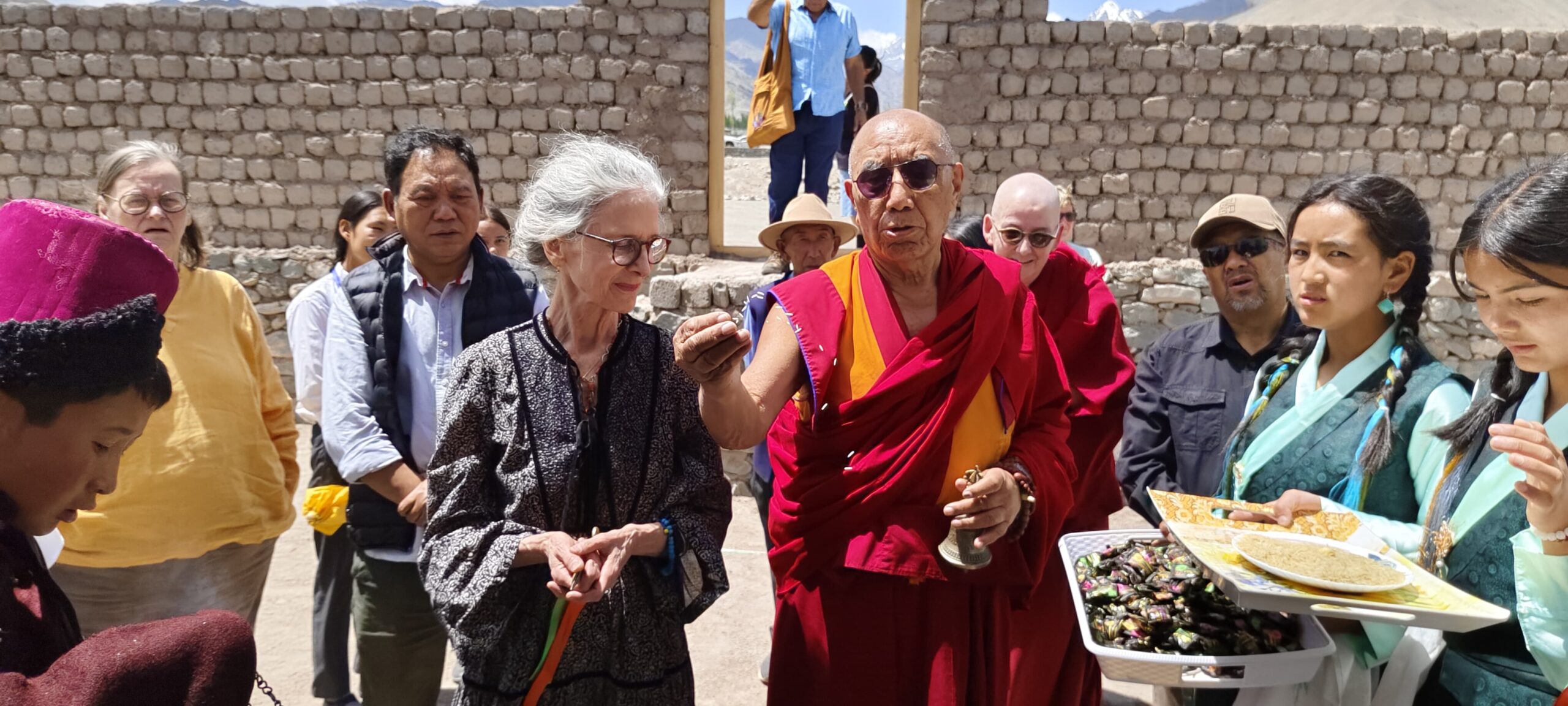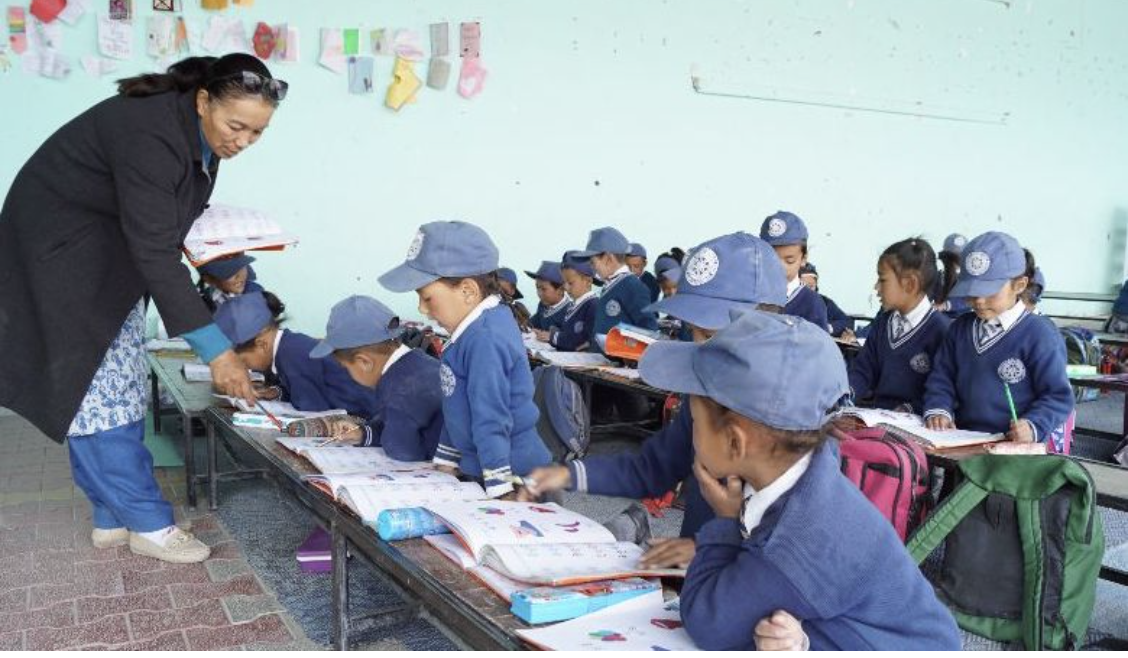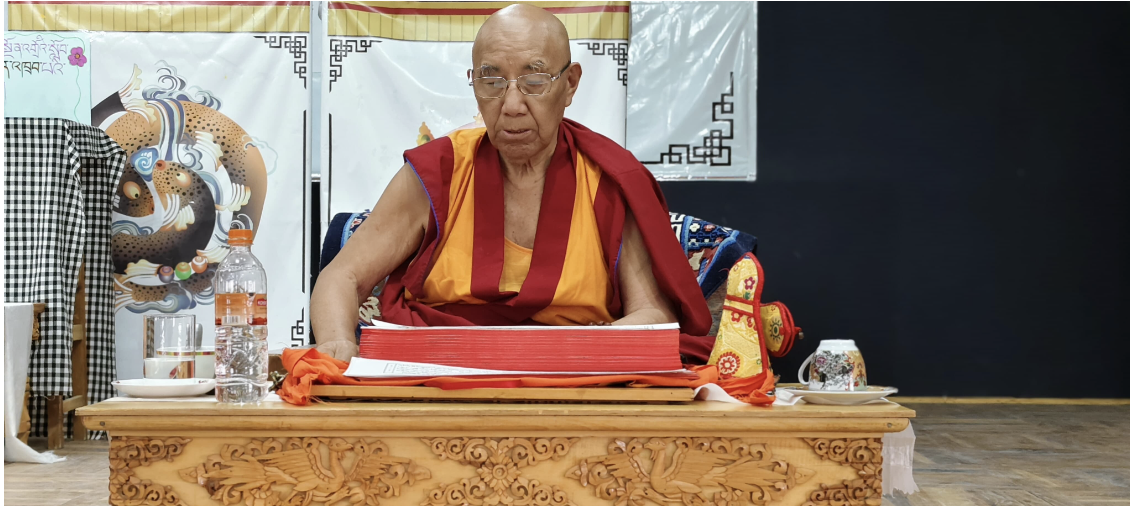
We’ve Entered a New Era!
25 Years of Educating Ladakhis, and Many More to Come!
We commemorated Siddhartha School’s 25th anniversary on July 14, 2022. The Silver Jubilee Celebration was sprinkled with dance, student presentations, a lot of smiles, and speeches. One of the star presenters was our school’s founder, Khensur Rinpoche Lobzang Tsetan, who prepared heartfelt words recounting his own upbringing as a monk, the origins of the school, and memories of all who have helped shape the school into the thriving institution it is today.
Rinpoche presented his speech in Ladakhi to nearly 1,000 students, parents, guests, and supporters in attendance. He was then followed by Siddhartha School alum Stanzin Angmo, who read the English version offered here. Below are his words of joy, gratitude, and wisdom. Enjoy.

When I set out to write this speech, I thought I would tell you where it all started. The founding of Siddhartha School is a story with many beginnings. I could say that it began in the summer of 1994 in a Harvard University dormitory kitchen. That meeting with a couple of my students kicked off the creation of a US board with members from Maine and other places. Or I could say that the school started that fall in Stok when distinguished local leaders helped guide me in securing the land for our campus, hiring our first teacher, and securing our certifications. Or, we could remember the miraculous start that was the first day of our school in 1995. Roughly 20 families entrusted their littlest children to our care, even when we didn’t yet have a desk for our teacher or books for the kids. There would be no school without them bringing their children to us on our first day.
Of course, these events are simplifications of our founding story. Many good people helped start the school, nurture it, and bring us to today’s celebration of our 25th anniversary. As I get older, I spend time thinking about it all. I have realized the beginning of the Siddhartha School story lay not in a single, significant moment, place, or person, but in many moments—recent and long ago, places—near and far away, and people—rich and poor, Buddhist and non-Buddhist.

One moment I remember well. It happened long before the school was even an idea, back when Stok had many more fields. I was just a little boy living at our family house across the road. My mother sat with me at our window and pointed over the mountains, telling me that one day I
would go to be with the sun and moon, that I would study in a great monastery in Tibet. I was very happy thinking about such an adventure, and one day my father told me it was time to go. We went, by foot and by bus, through Sikkim and into Shigatse. We begged for food along the way, sleeping outside and depending on the kindness of others to help us along the journey. Finally, I joined Tashi Lhunpo Monastery as my parents had dreamed for me.
I missed home so much and was unlike the Tibetan boys in my class. I was bigger, a bit older, and darker, and my accent was different. I worked hard, though, and met other Ladakhi monks. I was still a young student when the Cultural Revolution spread into Tibet like a dark cloud. Suddenly our studies were upended; we were told everything we had learned was wrong and that our teachers were bad. But, unlike my Tibetan cohorts, my Ladakhi classmates and I were able to return to Ladakh, as Indian citizens. We were lucky.

When you lose something precious, you may realize more deeply its value. I felt a new urgency to complete my education.
I arrived back in Stok with no money, no geshe degree, and many memories of friends at Tashi Lhunpo who had lost hope. Remembering them strengthened my resolve to never give up my quest and my parents’ dream, that I get a monastic education. I first went to school in Choglamsar and then left for Varanasi to complete my Shastri degree, which is similar to a bachelor’s degree. Then, with the help of His Eminence Bakula Rinpoche, I got a job teaching at the government school back in Ladakh, in Sakti village. I was relieved to get this post. With a salary, the school job would help me save money to travel to South India, where monks were rebuilding Tashi Lhunpo in exile. It was a vital opportunity, for it meant that my mother and father’s dream for me to become a geshe was still possible.
Equally important, Bakula Rinpoche’s blessing with the Sakti post taught me a valuable lesson: even though I had very little, I could give back to Ladakh through service, teaching our children. At that time, many were saying our schools were not good, or worse, that our children were failing. Some said it was because we did not have proper facilities. I found that the children at Sakti needed love and encouragement, more than blackboards, for their confidence and capabilities to grow. We had class outside and drew our letters in the dirt. We put on plays for the families, and every effort we made with love and kindness helped the children grow and their minds flower. Students learned to read. Parents learned their children were intelligent and capable. I learned that even though I had no money, no resources, and a broken dream of studying in Shigatse, I still had the power to serve my community. I could still help others in need, and it was, in fact, my duty to do what I could to help Ladakh by helping our children.
In time I went to the new Tashi Lhunpo Monastery in South India, only to learn another valuable lesson—that many people, beyond Ladakh and Tibet, cared about Buddhist teachings. They also wanted to support monks like me as we strived to keep our traditions and culture going in the face of China’s persecution.

Then one day, strangers from a faraway place called New Jersey invited me to come to their monastery to teach and learn English. I arrived expecting a large monastery with temples and other buildings. Instead, it was a simple house with a small temple. Geshe Wangyal, a Kalmyk lama, was helping young Americans learn the Dharma and immigrants from his homeland in Russia start new lives. I learned English over bowls of ice cream with a big Russian man with a booming voice. I mowed the lawns after prayers and made new friends. I can see now how this experience paved the way for me to start Siddhartha School, blessing me to make many friends who brought me to teach at centers and colleges abroad. All my friends, from Massachusetts to Maine, California to Karnataka, Stok to Switzerland, Sakti to Shigatse, are starting points for the Siddhartha School’s story. Without them and you, Siddhartha School would not have its 25th anniversary today.
In fact, when I think of the very humble beginnings of our school, in a rented house just down the road, and the people who came to help it start, this motivation to serve, to help others, this was and continues to be our greatest power, the common seed in all of these founding stories. No matter our age, culture, status, or religious differences, we found each other because we wanted to help others. We knew that in giving education, like our beloved teachers, parents, and mentors, we chose to give our time, resources, labor, and love to help children learn.
So, in closing, I think the story of Siddhartha School starts in your story. Think of your parents or grandparents, teachers, and friends who helped you learn in different settings, were so kind to you, cared for you, and gave you opportunities. You took their gift and passed it on to us through your support, sponsorship, labor, and love. You continue to bring this gift to Siddhartha School as we keep our doors open to new children year after year. Thank you for being a part of our 25th anniversary celebration. Thank you for all that you do for us. Thank you for finding us and being a part of our story.




